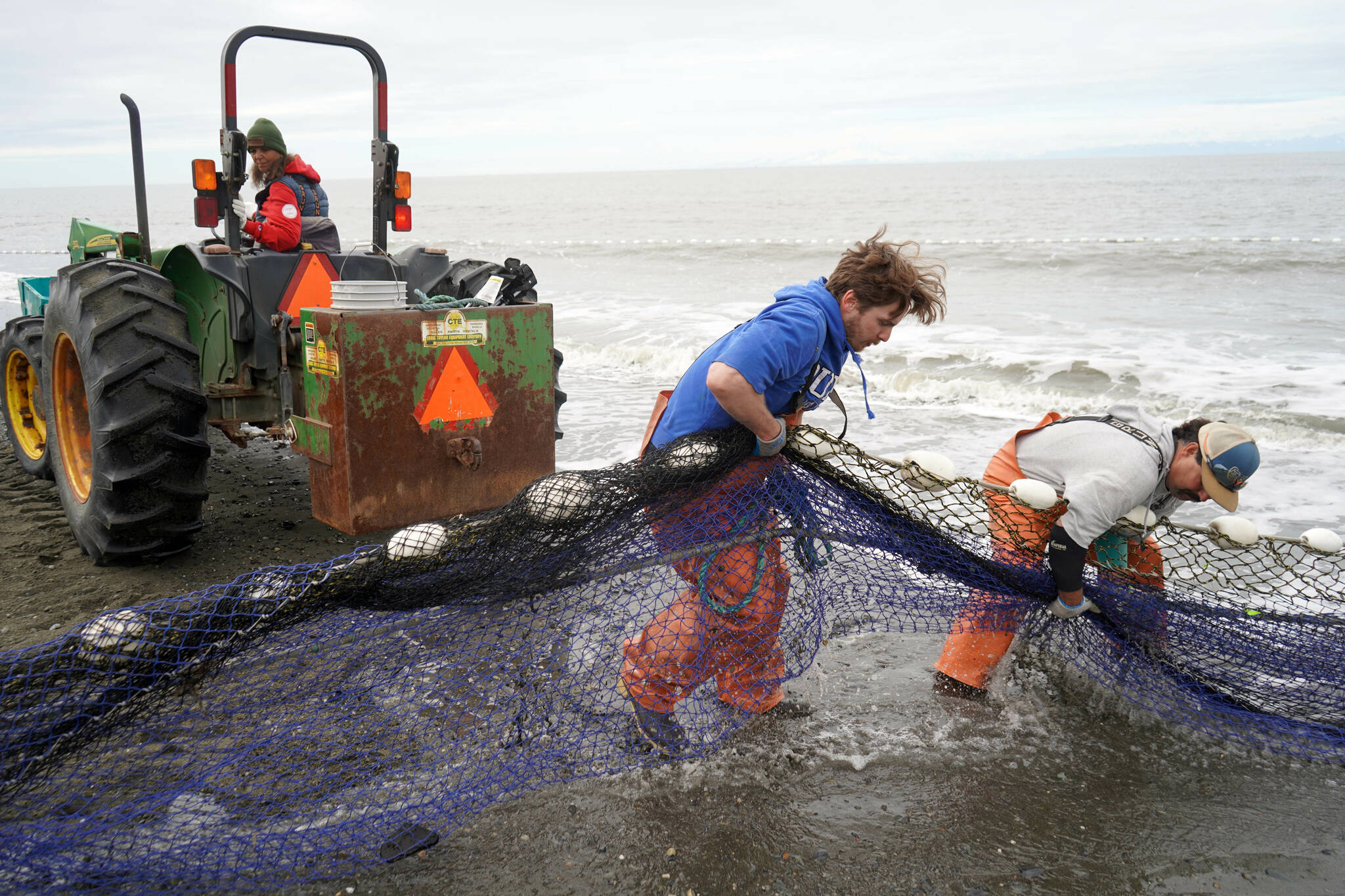The Kenai City Council on Wednesday put their support behind an effort to see set beach seines added as a legal gear type for the east side setnet fishery before the 2025 season.
A resolution adopted by the council on a 4-2 vote, with Alex Douthit and Phil Daniel opposed, says that Kenai supports an agenda change request authored by Kenai Mayor Brian Gabriel and his wife, Lisa, that calls for the gear to be allowed, citing the results of a test fishery they operated this summer.
Agenda change requests are proposals to the board to hear an issue outside of the board’s three-year cycle. A set of 15 will be heard during a board work session on Oct. 29 and 30 in Anchorage. More than half of those center on the Kenai River or its king salmon management plan, both of which aren’t scheduled to return before the board until 2027. If accepted by the board, the issue will be added to their calendar to be considered this winter.
This summer, the Gabriels led a test fishery operated under a commissioner’s permit to explore beach seines as an option to harvest target sockeye salmon without killing king salmon. They told the Clarion in July that they’d seen their nets work successfully — that they hadn’t killed a king salmon, that they could adapt the nets to different sites, and that they’d caught enough sockeye to be economically viable.
On Wednesday Gabriel recused himself from the conversation and abstained from voting because he and his wife authored the request and he would benefit financially were it accepted and the gear later authorized. Their proposal describes a fishing season from June 20 to Aug. 15, with the use of one set beach seine net per permit, used with shore-based infrastructure. The nets may be up to 100 fathoms in length, 215 mesh deep with a maximum mesh size of 3-and-a-half inches. If gillnet fishing were allowed by regulation, a permit holder would have to fish one or the other.
A memo by Vice Mayor Henry Knackstedt, who sponsored the resolution, says that Kenai has “consistently advocated” for well-managed salmon runs, informed by science, that allow opportunity to all users. The ESSN, he writes, hasn’t seen that opportunity in years.
The beach seines have proven an “economically viable method of harvesting sockeye without killing king salmon,” Knackstedt writes, and approval of the ACR is “the only avenue” to see the gear approved for use before the 2025 season.
During the council meeting, Knackstedt added that the State Department of Fish and Game last month wrote in their official staff comments to the board, published in September, that there is justification for the board to add the issue to their agenda and consider the beach seines out of cycle.
Their comment says that the ACR addresses an effect on a fishery unforeseen when the regulation was adopted. They write that during the board’s meeting in March, the board and the department “encouraged the public” to explore alternative methods and gear for selective harvest of sockeye salmon in the ESSN.
The outcome of this summer’s test fishery is “new information” that could be considered by the board, they write.
Douthit voted against the resolution. He said that Kenai weighing in on a single ACR is “too specific,” when there are several other proposals that address and affect fishing regulations on the Kenai River.
“I’m not on the board of fish, and I’m not a biologist,” he said. “Calling out one specific item that does tend to greatly affect one member on our board, whether I agree with the means of how it’s being done, I don’t think it’s a wise choice for this body to get so specific on this one item.”
Daniel also voted against the resolution but made no comments during the meeting.
A full recording of the meeting is available at “City of Kenai – Public Meetings” on YouTube. The text of the ordinance can be found at kenai.city.
Reach reporter Jake Dye at jacob.dye@peninsulaclarion.com.

